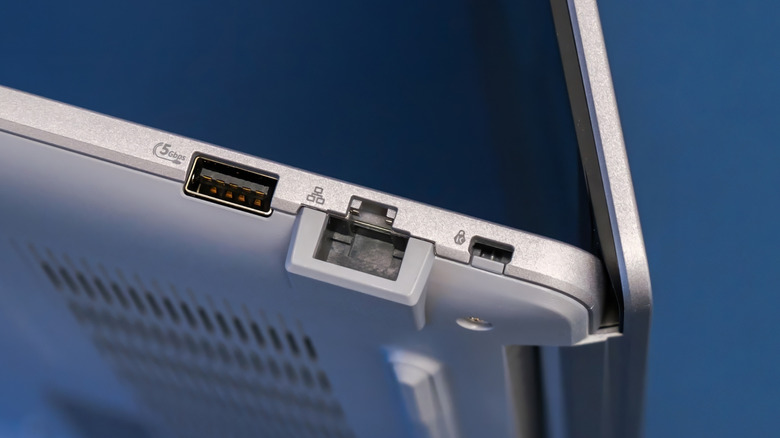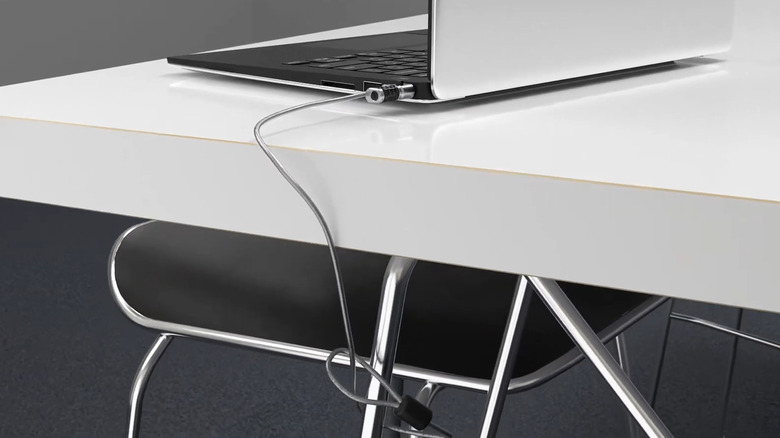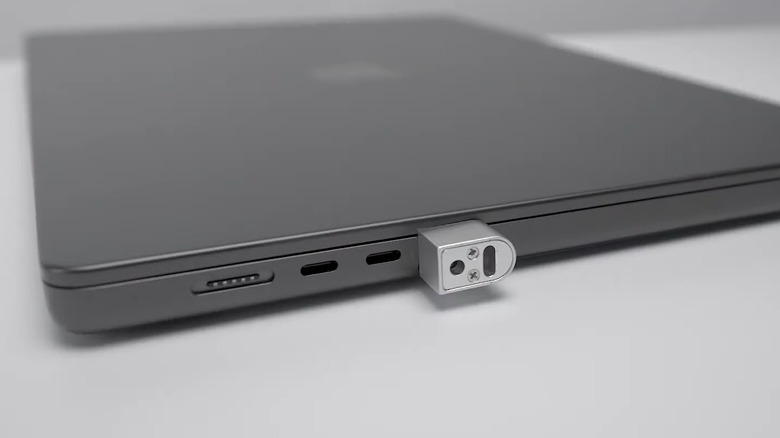What Is The Lock Port On A Laptop? (And How To Use It)
We may receive a commission on purchases made from links.
Using a laptop in public places like libraries, cafes, and parks comes with the risk of theft. All it takes is a moment of distraction, and your laptop could be gone without a trace. Sure, there are ways to track down a stolen laptop, but as the saying goes, prevention is better than a cure. After all, it's not just about protecting the expensive hardware but also the sensitive data stored on it. Fortunately, most laptops include a dedicated lock port that can help you keep your device secure in public spaces.
The lock port on a laptop looks like a tiny rectangular hole and is typically located on the side or back of the device. It is also known as the Kensington lock slot or K-slot. The way this lock functions is quite simple: you wrap one end of the cable around a sturdy, immovable object, then insert the lock into your laptop's K-slot and secure it using the key or the combination lock.
Once locked, your laptop is essentially anchored to a desk or table, making it difficult for anyone to walk away with it. The cable used in these locks is made of aircraft-grade carbon steel, so it can't be easily pulled or cut. And if excessive force is applied, it may damage the laptop's casing, making it less attractive for thieves who intend to resell it.
Not all the laptop lock slots are same
Kensington lock slots are not just useful for personal laptops. They can also be used by colleges, libraries, and businesses to prevent devices from being moved or stolen. And these slots are not limited to laptops; you'll also find them on desktop computers, monitors, projectors, and even gaming consoles.
Kensington lock slots come in different types depending on your laptop model. The most commonly used is the Kensington Standard Slot, which looks like a small rectangle. Modern laptops with a thin design typically have the Kensington Nano Slot, which is narrower. There's also the Noble Wedge Slot, which is the smallest of the three. Depending on which lock slot your laptop has, you'll need to purchase the appropriate lock. Alternatively, you can get a universal laptop cable lock from Amazon that works with all three slot types. Keep in mind that many modern ultrathin and lightweight laptops omit the lock slot entirely for design reasons, so don't be surprised if your laptop doesn't have one.
When buying a cable lock for your laptop, you'll need to consider things like the cable length, lock type, and whether it includes features such as an integrated alarm system. When using the lock, make sure it is attached to something that can't be easily moved or broken. Even with a Kensington lock in place, it's still best not to leave your laptop unattended in public spaces for long.
Can you secure a laptop without a lock slot?
If your laptop lacks the Kensington lock port, you can still secure it using the Anchor security lock adapter. The compact adapter plugs into your laptop's 3.5mm headphone jack. After plugging it in, you need to use the included screwdriver to turn the screw clockwise. Once you do, the adapter will expand inside the port and lock securely. Don't worry; the adapter is designed not to damage your laptop's audio port.
Once the adapter is locked in, you can use any standard laptop security cable lock, like those from Kensington, to secure your laptop. When you need to remove the Anchor lock adapter, simply use the screwdriver to turn the screw counterclockwise. The Anchor lock adapter essentially adds a lock slot to laptops that don't come with one built in.
A lock adapter isn't your only option. You can also get a device like AlarmID from Amazon. It works similarly to a Kensington lock by securing one end to a sturdy object, but instead of locking your laptop with a T-bar mechanism, it connects to your laptop via a USB Type-C cable. If someone else tries to remove or cut the cable, it plays a 100dB alarm to inform you about the theft. The alarm can only be turned off using your fingerprint. A key benefit of this device is that it can be used with a smartphone or other USB-C gadgets.


